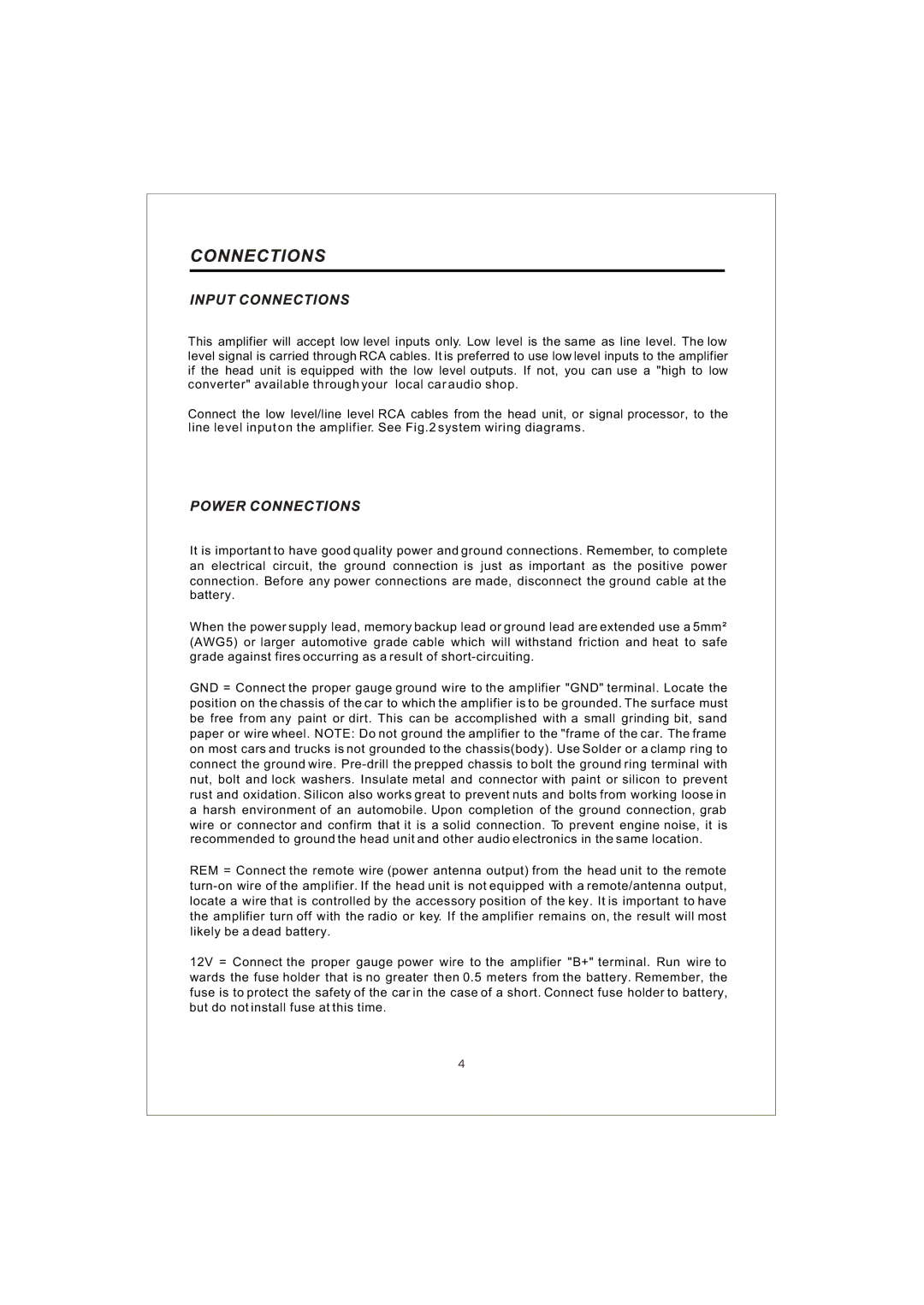A700.4, A1100.2, A900.4, A500.2, A2200.2 specifications
Interfire Audio has established itself as a reputable brand in the automotive audio industry, with a strong lineup of amplifiers that cater to both audiophiles and casual listeners. Among their most notable offerings are the A500.4, A700.2, A800.5, A1000.2, and A300.2 amplifiers, each designed to deliver superior sound quality and performance.The A500.4 is a compact 4-channel amplifier that packs a punch. With its efficient Class D circuitry, it delivers 125 watts per channel at 4 ohms, providing ample power for any speaker setup. This amplifier is equipped with built-in low-pass and high-pass filters, allowing users to tailor the audio output to their preference. Its robust construction and thermal management features ensure reliable performance even under demanding conditions.
Next in the lineup is the A700.2, a 2-channel amplifier that is perfect for powering a pair of high-performance speakers. This model offers 350 watts of power at 2 ohms, making it an ideal choice for those looking to achieve clear, dynamic sound. The A700.2 includes advanced circuitry designed to minimize distortion and maximize efficiency, ensuring that every note is delivered with clarity.
For those requiring multi-channel capabilities, the A800.5 is a versatile 5-channel amplifier. Capable of delivering 100 watts to four channels and 300 watts to the sub output, it is designed for full-range sound reproduction. With features such as variable crossovers and gain control, users can customize their audio experience. Its compact design allows for flexible installation options, making it a popular choice among car audio enthusiasts.
The A1000.2 stands out as one of Interfire's most powerful amplifiers, offering an impressive 500 watts per channel at 2 ohms. This powerhouse is perfect for hard-hitting bass and can drive larger subwoofers with ease. The incorporation of high-quality components ensures optimal performance, while advanced thermal protection technology safeguards against overheating during intense use.
Lastly, the A300.2 is an entry-level 2-channel amplifier that doesn’t compromise on quality. Providing 150 watts per channel at 4 ohms, it is an excellent choice for those seeking an upgrade without breaking the bank. Its durable design and user-friendly installation make it an appealing option for beginners looking to enhance their car audio experience.
In summary, Interfire Audio's A500.4, A700.2, A800.5, A1000.2, and A300.2 amplifiers each bring unique features and technologies to the table, making them worthy contenders in the competitive automotive audio market. With an emphasis on power, clarity, and user customization, these amplifiers cater to a wide range of audio needs, ensuring that every listener can find the perfect match for their setup.

